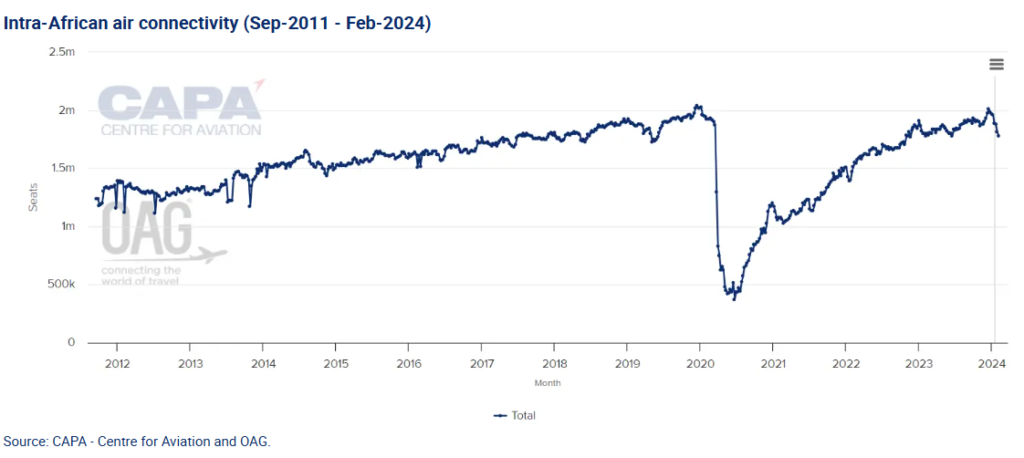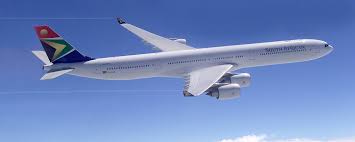Revitalizing African Airlines for Global Connectivity
The African aviation industry is at a critical crossroads, facing significant challenges that hinder its growth and efficiency.
Despite the continent’s vast potential as a travel destination, airlines struggle with high operational costs, restrictive government policies, and a lack of intra-Africa connectivity.
To unlock the full potential of African airlines, it is essential to address these barriers and foster an environment conducive to growth.
The Current State of African Aviation
African airlines are grappling with some of the highest operating costs globally. According to the International Air Transport Association (IATA), aviation fuel costs in Africa are 17% higher than the global average, while taxes, fees, and charges are 12% above international norms.
This financial strain is compounded by high costs associated with maintenance, insurance, and ground handling.
For instance, Ethiopian Airlines, Africa’s largest carrier, reports that fuel alone accounts for 45% of its operating costs—significantly higher than the global average of 25%.

The Impact of High Taxes and Fees
The onerous taxes and fees imposed by governments are largely unilateral and often lack transparency. Airlines are frequently burdened with additional profit taxes outside their home markets, which can deter them from servicing certain routes.
The African Airlines Association highlights that airports like Libreville in Gabon impose some of the highest charges on the continent, further complicating operational viability.

Connectivity Challenges in West Africa
Connectivity within Africa remains a major issue. Following the collapse of Air Afrique in 2002, many new airlines have emerged in West Africa; however, they often lack the economies of scale necessary for sustainability.
Currently, many routes in West Africa average fewer than 70 passengers per day, making it difficult for airlines to justify increasing flight frequencies. In fact, only 8% of the projected 176 million passengers expected to travel within Africa in 2024 will take intra-African flights.

Also See: AFRAA HUB
The Need for Liberalization
To break this cycle of stagnation, liberalization is essential. The African Union’s initiative for a Single African Air Transport Market was adopted in 2018 but has seen slow implementation.
While 37 out of 55 member states have signed commitments representing 89% of the aviation market, harmonizing regulations remains a challenge. Governments must prioritize removing restrictions on traffic rights and capacity while fostering competition among airlines.
Emirates: A Case Study in Connectivity
While African airlines struggle with internal challenges, Emirates has successfully expanded its footprint on the continent. With over 161 weekly flights to 17 African nations, Emirates serves as a vital connector for travelers across Africa and beyond.
The airline has established partnerships with local carriers to facilitate last-mile connections and promote tourism within the region. This model demonstrates how collaboration can enhance connectivity and stimulate demand for air travel.

Economic Development Through Aviation
African governments need to recognize that airlines can be significant enablers of economic development rather than merely transporters of passengers.
Despite challenges, the potential for growth in Africa’s aviation sector remains indisputable. Currently, the industry is estimated to support $63 billion in economic activity and provide 7.7 million jobs.
According to IATA, GDP growth has a 1:2 multiplier effect on air travel; thus, improving intra-Africa connectivity could drive substantial growth in passenger traffic.
Furthermore, projections indicate that the scale of aviation’s employment and GDP impact in Africa could triple within the next two decades. By 2035, the number of passengers traveling to, from, and within Africa is expected to surpass 260 million.
This growth translates into significant job creation, economic activity, and socio-economic development for the continent. Thus, there is a clear incentive for governments to invest in aviation infrastructure and policy reform.

Overcoming Visa Restrictions
Another barrier to growth is the restrictive visa regimes that complicate travel across borders. Simplifying visa processes would not only encourage tourism but also facilitate business travel within Africa.
Countries that adopt more open visa policies stand to benefit significantly from increased visitor numbers.
Conclusion: Way Forward
The future of African aviation hinges on overcoming these challenges through collaborative efforts between governments and airlines. By liberalizing air transport policies, reducing operational costs, and enhancing connectivity, African nations can unlock their full potential as a global aviation hub.
As we move forward into 2025 and beyond, it is imperative that stakeholders recognize the vital role aviation plays in economic development and work together to create a sustainable and prosperous future for African airlines.
Related Posts:















